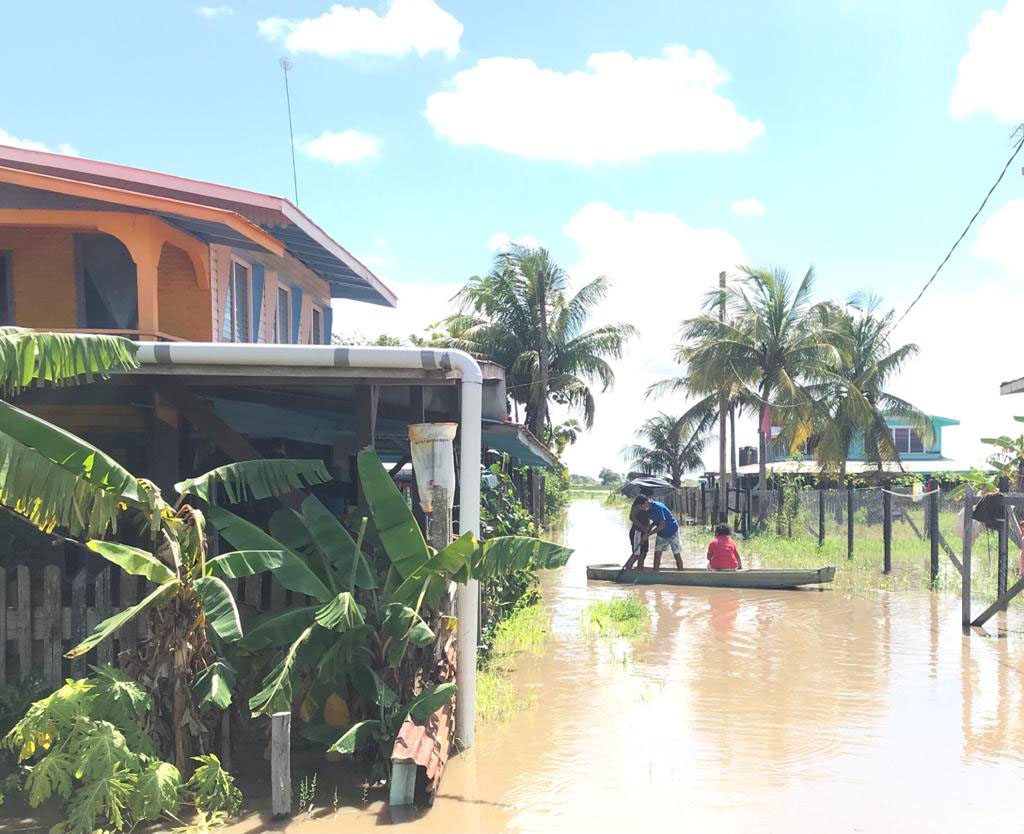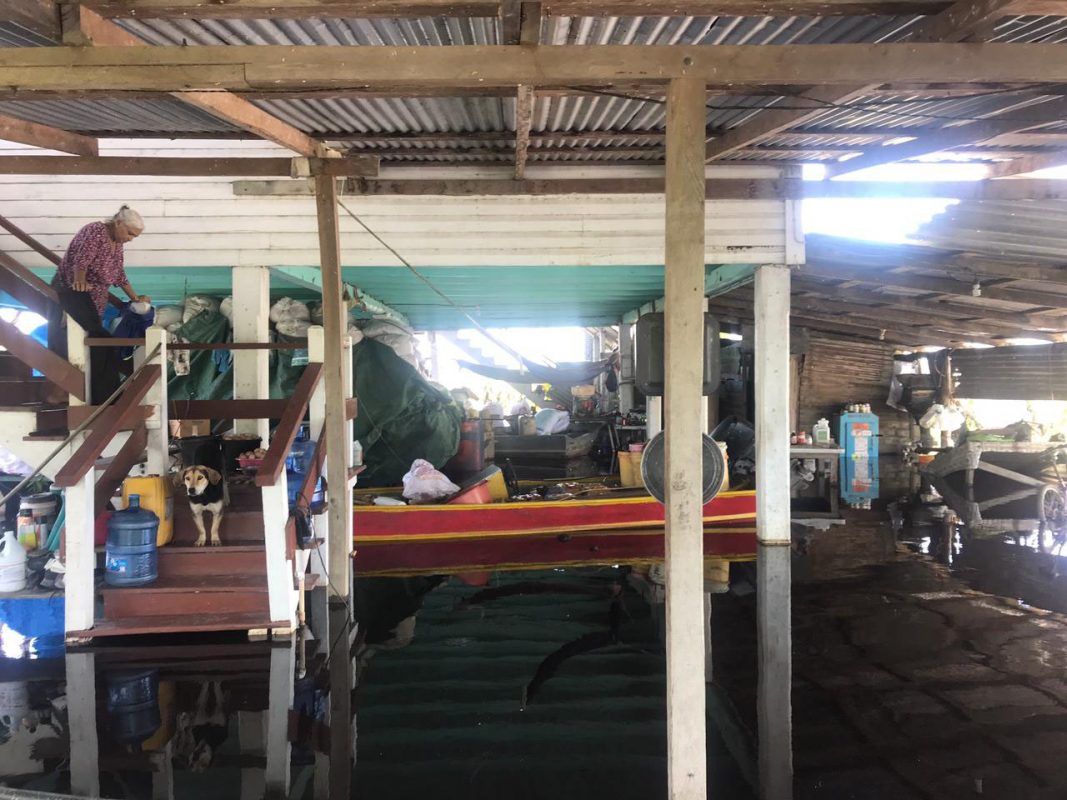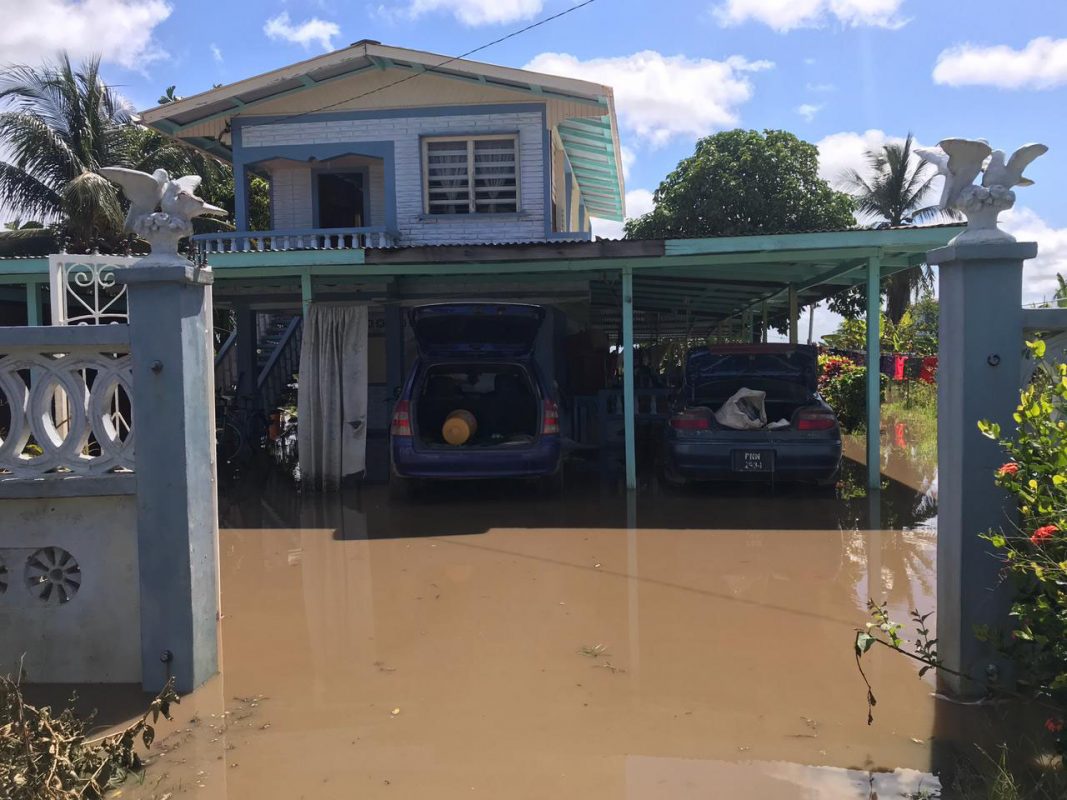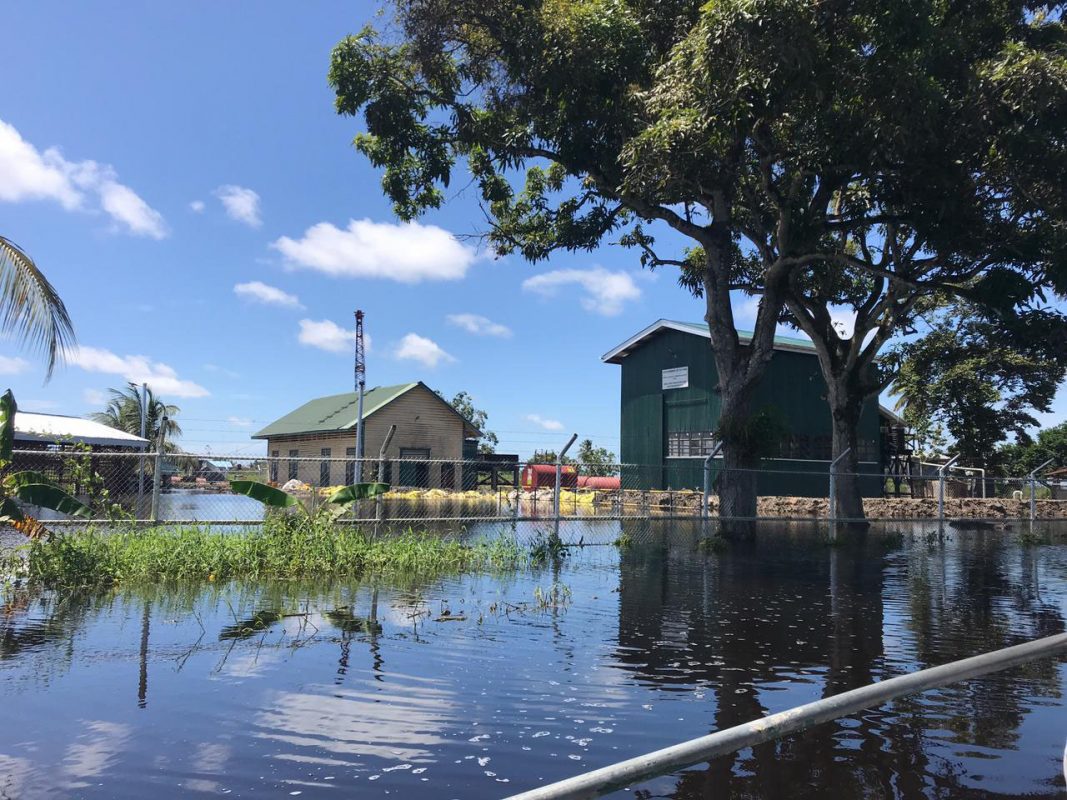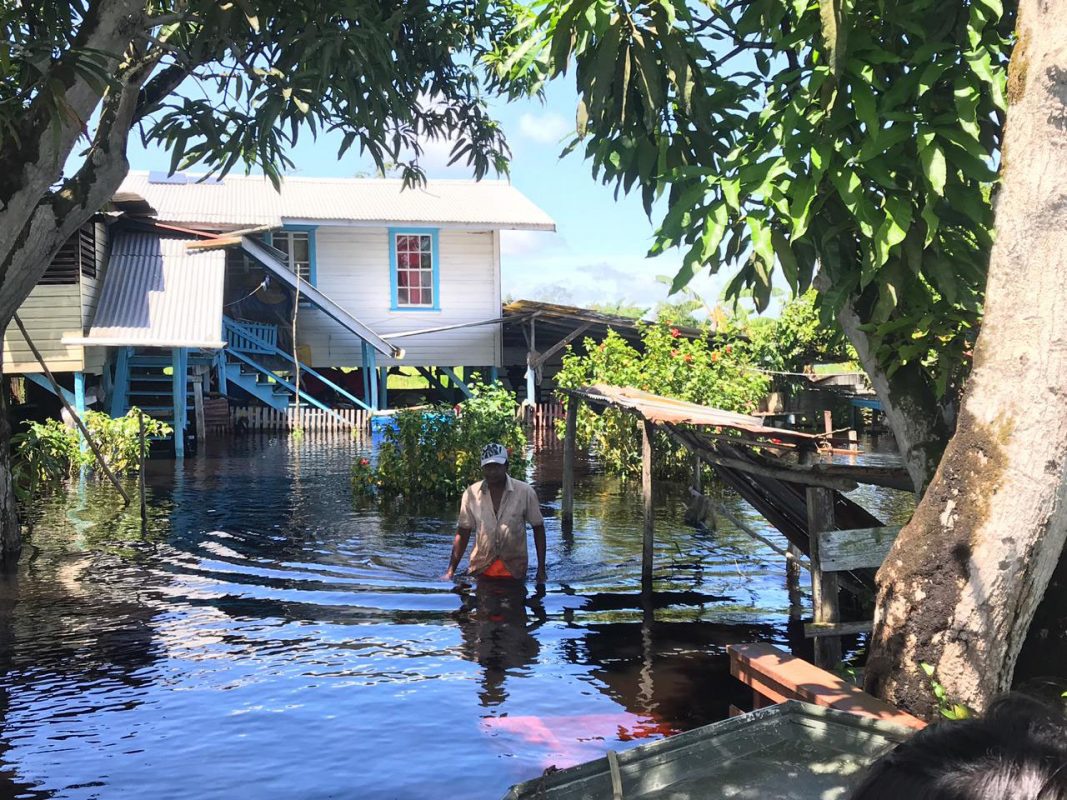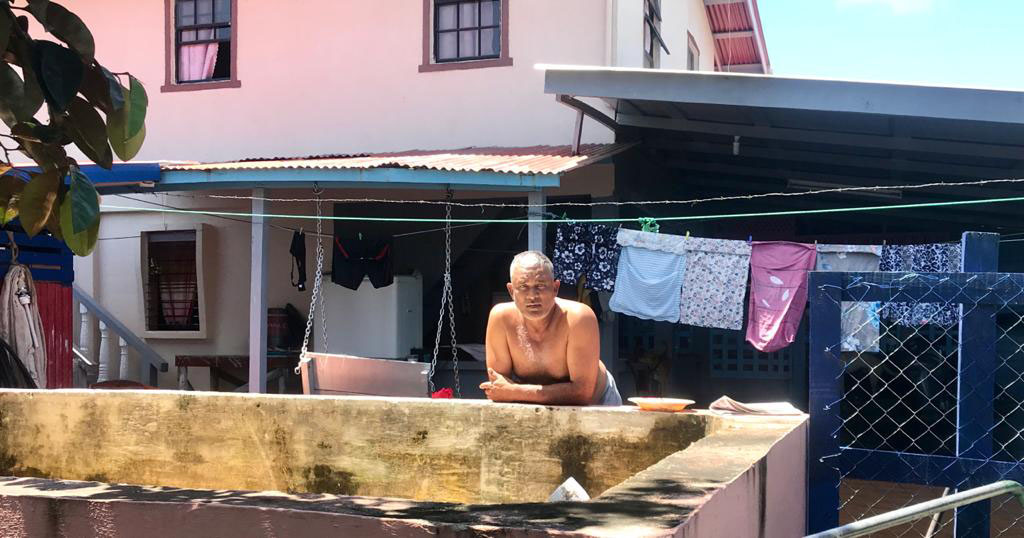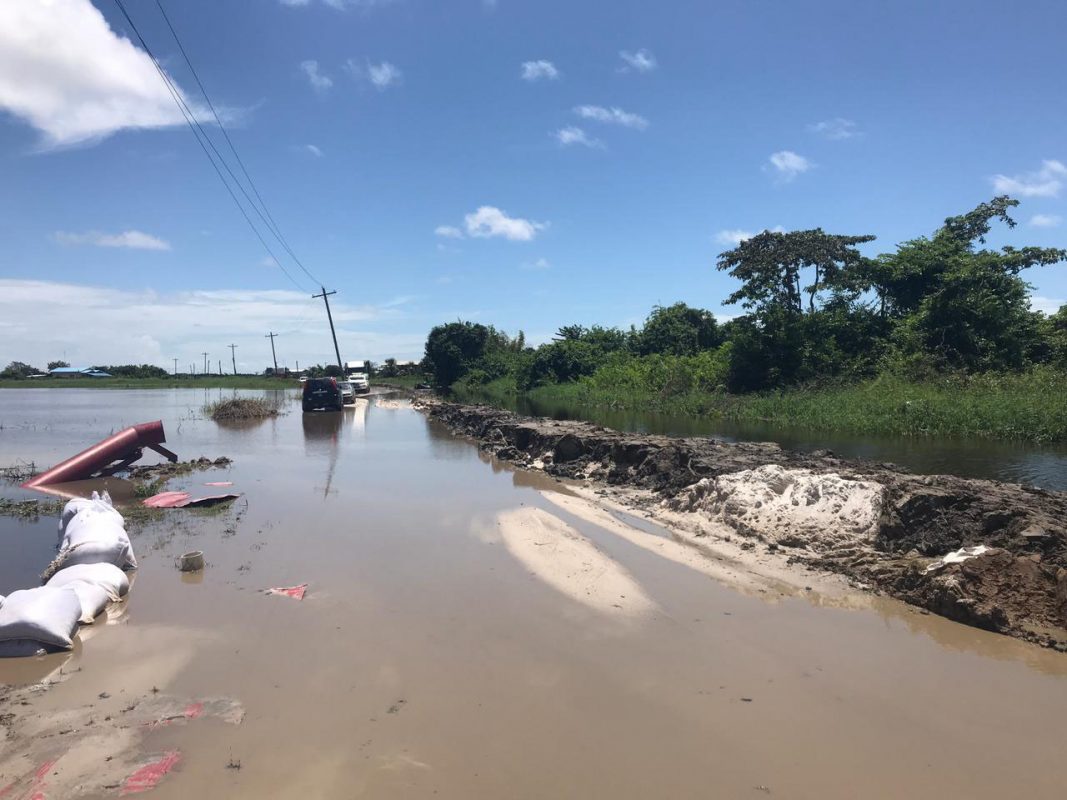Flooding along the Mahaicony River continues to decimate the livelihoods of farmers and gardens that many families depended on to provide for their households.
During a visit by Stabroek News along the river yesterday, villagers at Mora Point, Gordon Table and Pine Ground pointed out that millions of dollars in investments have gone down the drain. The villagers said they will be forced to start afresh after the floods and they will need much assistance from government to do so.
With the Mahaicony River overflowing, the level of water continues to rise and villagers said in some low-lying areas the water is almost four feet high. This phenomenon has convinced villagers that their flooding woes are as a result of water released from the East Demerara Water Conservancy into the Mahaicony River.
When the water levels began to rise, villagers had suggested there was a breach in the conservancy but Chairman of the National Drainage and Irrigation Authority (NDIA) Board, Lionel Wordsworth on Friday rebuffed the suggestion and said that the water levels remains at a manageable height.
Many farmers were in the land preparation phase for rice cultivation and they said that they will no longer be able to plant for reaping before the December rainy season. They noted too that there is uncertainty as to when the lands will return to a state for cultivation.
High water levels in the backdams and savannahs have also caused many farmers to lose their cattle. Apart from this, the need for potable water is also becoming important as many have been forced to purchase water from out of the villages or to harvest rain water.
“We cannot use the water here at all, even though the river is flowing, the animals are dying and rotting in the water so we cannot use it …,” a resident pointed out.
“This flood destroy every single thing we have on the farms nothing cannot be saved here after this flood,”Deonarine Persaud said as he was on his way to assess the damage on his lands.
Persaud, is one of the farmers who went ahead and began cultivation on 160 acres.
“This flood leaving us in debts because it kill our livelihoods. The flood will go but the debts will remain and we need the government to talk to the banks because we will not only have to get capital to restart after this but we will have to keep paying the banks,” he lamented.
He noted that government should request a write-off of loans instead of a restructuring of loans as that will only place pressure on farmers.
“Restructuring loans is like digging a hole to full another hole. We don’t need that this time. We need to know we will be able to re-invest without any burden,” he said.
Like Persaud, cattle and rice farmer Amernauth Ramcharran is also counting losses at Mora Point which he said are close to $5 million.
When the floods hit, he had already sown paddy on 150 acres of land and even though he had deployed irrigation pumps, he has not been able to save his crop.
Ramcharran said that when he saw the water rising he hired an excavator to empolder his rice fields but that was in vain as the entire crop has been wiped out.
“Is over $200,000 I owe the owner for the excavator now… I used his machine and I have to pay for it,” he said as he pointed out that over 80 gallons of diesel was also used in the process.
“We know the water was coming but not at this height, it really messed up this crop because I spend money on aircraft to spray and fertilize,” he noted.
According to him, if the authorities were planning to release water from the conservancy they should have informed them and this would have positioned them better in their planning. A view shared not only by him but other rice farmers.
“For my cows, I don’t know how much living and how much dead because you can’t find them they keep moving in the savannah searching for dry ground but we don’t know where they are,” he added.
He was also forced to give away over 100 layers to his neighbours and friends as there was no high ground to place them and many drowned as the water rose.
Ramcharran’s home also has water in the bottom flat despite the placing of sandbags to keep water out.
For Prem, (only name given) he was forced to retail his cows below market value in a bid to cut his losses.
“It is really terrible for us man, you can see (pointing to his flooded dwelling place) water all over and in the savannah it is worse. Our cows don’t have nowhere to graze and the butchers are coming to buy but when they were paying $150,000 per head before the flood they want to give $70,000 or less now,” the farmer of Pine Ground said.
He explained that with the butchers recognizing they have no alternative, they are seeking to cash in on this situation.
Prem said while he sold some of his cattle, he discovered six dead and five cannot be found. If the water continues to rise, he said he will have to consider the missing cattle dead.
Touching on the rising water level, he boldly said “this is not rain water. Years we managing rain water but this is not rain water.”
The cold, black water invading their dwelling spaces and slowly rising he said is what was released by authorities controlling the conservancy.
“We know what is rain water and what is conservancy water and this is conservancy water. We live here and we know what this is. We didn’t had no heavy rainfall since Thursday and the water keep coming up,” he stressed.
The man stated that for the entire day they are forced to stay upstairs and the children are finding it difficult to do so as they are accustomed to be in the yards.
Gianand Persaud of Gordon Table described the flooding as the worst in his lifetime. The water level is just above his waist and his family is still reliant on a fireside to cook meals.
“We have to go the backdam to search for firewood because what we have here is wet. We fireside even flooded, we gotta deh in the water to cook… it terrible terrible,” the elderly man lamented.
Asked about his livestock losses, Gianand said “They don’t have nowhere dry to stay so they get weak in the water and drowned. By time you try to bring the cows out from the savannah they give up or they drown”. He said that the water level in the savannah is almost chin high.
Another farmer, Kelesh Sewnarine of Mora Point related that their cattle are dying daily as the water levels continue to rise. Explaining the scenario from his visit to the savannah on Saturday, he said the height of the water almost covers the body of his cow.
“Area where they are supposed to be grazing is flooded with water so high that these cows will drown if we cannot find dry ground for them. We don’t have dry ground here and we don’t know when this water will go down,” he explained.
After the last major flooding, farmers said they were able to see the ground about five months after.
Sewnarine said he attempted to plant 60 acres of rice on lands on the left bank of the river after the lands close to his house were flooding but he has since lost that.
“There is nothing we can do. This is the situation we are in we just cannot do anything, I had to put sand bag around my house to prevent water from getting in and I cannot save the rice lands it is all gone,” he stressed.
Wash Clothes
Over in Wash Clothes, Mahaicony Branch Road residents have also expressed frustration over the flooding situation. The water they noted has been rising and has invaded their homestead.
Farmers also complained of losses in this rice crop as lands have been waterlogged for days. One farmer said when the water had receded a few weeks ago he sowed fresh seed but with the return of the water he has lost the entire crop.
“When they were building the Hope Canal they told us we won’t get flooding but we are seeing this isn’t true. Look we yards flood and the water is smelling,” a villager said.
Many of the villagers pointed out that it was when they woke up yesterday morning, they discovered the water rising and creeping into their homes.
“This is water from both ends, from the Mahaica River area where they block off drainage and the water backing up and the water from rice lands over Mahaicony River coming …here too. We just getting flooded from both side,” Rajendra Sharma said.
Only on Saturday an excavator was deployed to the area and began empoldering the parapets of the road to prevent water from overflowing.
Additionally, in a bid to help the families who have been impacted by the flooding in the Mahaicony River, a Mortice family donated 242 food hampers, costing just over a million dollars to families affected by the severe flooding.
The distribution of the hampers was supported by Regional Chairman Vickchand Ramphal, Head of the National COVID-19 task force, Colonel Nazrul Hussain, former Regional Chairman Bindrabhan Bisnauth and ranks from the Guyana Defence Force.
